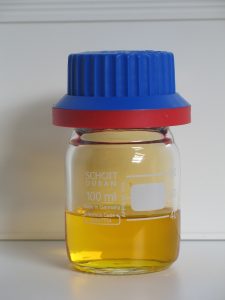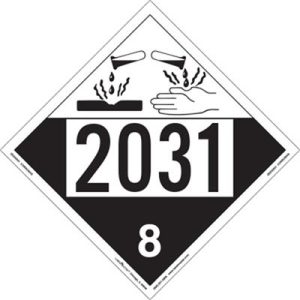The Fatal Nitric Acid Tanker Accident on Interstate 10

The nitric acid tanker accident occurred in February outside Tucson, causing a hazardous material spill on Interstate 10 and shutting down the vital Arizona highway.
The nitric acid tanker accident occurred in February outside Tucson, causing a hazardous material spill on Interstate 10 and shutting down the vital Arizona highway. The crash resulted in the evacuation of residents within a half-mile radius and a shelter-in-place order for those within a mile. The Arizona Department of Public Safety was responsible for managing the emergency response.
Immediate Response and Evacuations
Following the accident, the authorities promptly identified the leaked material as liquid nitric acid. The evacuation order was issued to ensure the safety of nearby residents, while those further away were advised to stay indoors. The University of Arizona Tech Park and several schools in the Rita Ranch area were among the places affected by the evacuation and shelter-in-place orders.
Impact on Traffic and Tucson Community
The incident had a significant impact on local traffic, with the Arizona Department of Public Safety warning motorists in the Tucson area to anticipate delays in their morning commute. The closure of Interstate 10 was expected to last for an extended period, as cleanup and investigation efforts continued.
In addition to the traffic disruptions, the local economy also experienced the effects of the accident. The closure of the University of Arizona Tech Park, an important hub for innovation and research, temporarily halted operations and affected several businesses. The Interstate 10 closure also impeded the movement of goods and services in the region, further impacting the local economy.
Health Risks Associated with Nitric Acid Exposure

Nitric acid, a highly corrosive and colorless liquid, is used in the production of ammonium nitrate for fertilizers and in the manufacture of plastics and dyes
Enjoying our insights?
Subscribe to our newsletter to keep up with the latest industry trends and developments.
Stay InformedNitric acid, a highly corrosive and colorless liquid, is used in the production of ammonium nitrate for fertilizers and in the manufacture of plastics and dyes. According to the Centers for Disease Control and Prevention (CDC), exposure to nitric acid can cause irritation to the eyes, skin, and mucous membranes. In higher doses, it can also lead to delayed pulmonary edema, pneumonitis, bronchitis, and dental erosion. The fumes produced by nitric acid are typically yellow or red and emit an acrid smell.
Emergency Crews and Cleanup Efforts
Emergency crews were quickly dispatched to the scene of the accident to address the hazardous spill and mitigate the potential risks to public health. Their efforts included containing the nitric acid, neutralizing the chemical, and cleaning up the affected area. These tasks required specialized equipment and training, as well as coordination between various agencies.
Addressing the Consequences of the Nitric Acid Tanker Accident
The authorities worked tirelessly to contain the hazardous spill and ensure public safety. The shelter-in-place order was lifted a day after the incident, allowing residents to return to their homes and routines. However, the loss of the truck driver’s life serves as a stark reminder of the potential dangers associated with transporting hazardous materials on public roads.
For more information on the nitric acid tanker accident and its effects on the Tucson community, refer to ABC15 Arizona. Additionally, tanktransport.com offers comprehensive coverage of incidents involving the transportation of hazardous materials, including safety precautions and regulations.
In conclusion, the nitric acid tanker accident on Interstate 10 serves as a tragic reminder of the potential hazards and risks associated with transporting hazardous materials. The incident led to significant disruptions in the local community, with evacuations, road closures, health concerns, and economic impacts. Moving forward, it is essential for authorities and transportation companies to prioritize safety and prevention measures to minimize the likelihood of similar incidents occurring in the future.
Lessons Learned from the Nitric Acid Tanker Accident

The nitric acid tanker accident highlights the importance of stringent safety regulations and protocols for the transportation of hazardous materials.
The nitric acid tanker accident highlights the importance of stringent safety regulations and protocols for the transportation of hazardous materials. Companies must ensure that their drivers receive proper training and are equipped with the necessary knowledge to handle emergencies. Moreover, vehicles carrying hazardous materials should be regularly inspected and maintained to reduce the risk of accidents.
Authorities can also improve their emergency preparedness by conducting drills and simulations to test their response to similar incidents. This can help identify potential areas of improvement and ensure that emergency services are ready to react swiftly and efficiently in the event of an actual hazardous material spill.
Preventing Future Accidents
To prevent future accidents involving hazardous materials, it is crucial for transportation companies, regulators, and local authorities to work together to develop and enforce robust safety standards. This may include conducting more frequent inspections, implementing advanced tracking and monitoring systems, and investing in research to develop safer methods of transporting hazardous materials.
By taking these proactive steps, the risks associated with transporting hazardous materials can be significantly reduced, thereby safeguarding public health and safety, as well as minimizing the potential for future accidents and disruptions.
In the wake of the nitric acid tanker accident on Interstate 10, it is crucial for all stakeholders to reflect on the incident and work together to create a safer environment for the transportation of hazardous materials. By learning from this tragedy and implementing the necessary safety measures, we can strive to prevent similar accidents in the future and ensure the well-being of our communities.





















